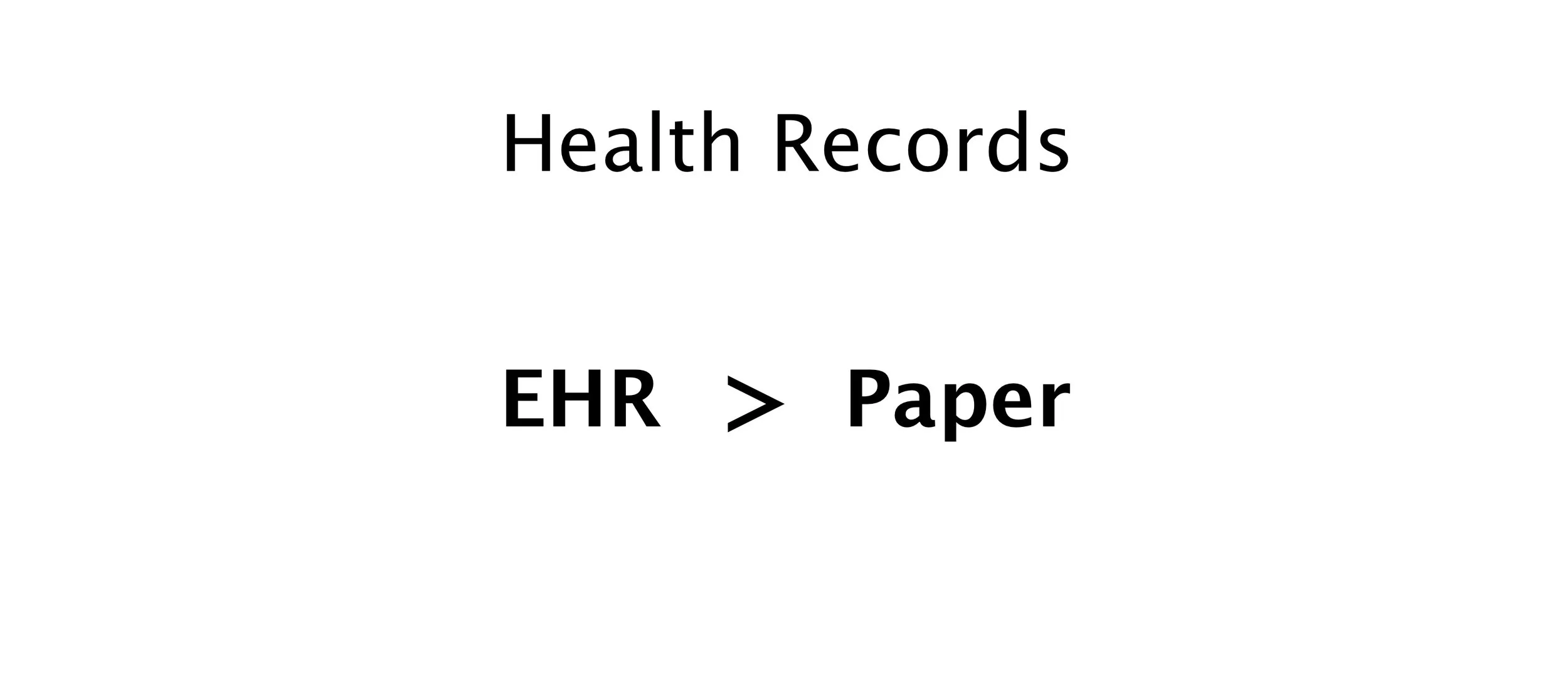Build an EHR clinicians want to use
The previous post (EHRs: Who do we build this for?) suggested that electronic health records have a number of users and stakeholders. There is tension in figuring out which ones to focus on, and what metrics to gauge 'success'.
I've become increasingly convinced that a key hypothesis & metric to gauge success in building enterprise EHRs is that: we can build an electronic health record tool that clinicians eagerly want to use over their paper-based workflows.
Listen to the post as audio in your podcast app under: Gregory Schmidt. Or on YouTube
Why this?
We can build an electronic health record tool that clinicians eagerly want to use over their paper-based workflows’
Why is this the right assumption to test? Why is measuring the conversion of clinicians presented with the option of retaining their paper-based workflows versus switching to the EHR one of the right metrics to track?
Adopting principles from The Lean Startup, such an assumption could both partially test the value hypothesis (we can build something users want), and the growth hypothesis (widespread word-of-mouth adoption).
From my experience on both side of the Atlantic, introducing electronic health records into new clinical environments is like pulling teeth. Most people dislike change in the workplace in general. It makes sense that changing the tools people use to see patients from analog to digital would induce discomfort among staff.
The problem is compounded because many EHR tools are very poorly designed to operate smoothly at the point-of-care (aka during the clinical appointment).
This means that clinicians workflows are often affected for the worse, as new electronic health record tools make their work more cumbersome and difficult. It is no surprise that when presented with the opportunity, many clinicians are hesitant to make the switch. In many contexts, the only reason clinicians do switch is that their administration ‘forced/told’ them they have to.
The unwillingness of clinicians to willingly switch from paper to digital slows the widespread global adoption of electronic health records. In turn, this slow EHR rollout impedes the ability to bring the benefits electronic health records have over paper charts to the care of many patients (such as improved clinical decision support, reminders, access to information, etc).
On the other hand, if an EHR tool is well built, and clinicians eagerly want to switch to it from paper, this will make scaling point of care EHR faster.
Imagine the potential for product growth, if clinicians at neighbouring facilities and health regions ask their facility leaders to install the same software and hardware, that their colleagues down the street have access to. (Or if patients demanded their care providers adopt these tools because they knew their care experience was better).
This word-of-mouth growth strategy could really work to increase adoption of well built point-of-care electronic health records.
Obviously I’m biased, but my hope would be that clinicians one day are very eager to install OpenMRS powered systems.
How do we gauge "eager"?
The hypothesis notes that "clinicians eagerly want to move to the EHR". The eagerness and long term satisfaction of the tool is important for word-of-mouth growth.
My impression today is that clinicians in the USA generally tolerate EHRs, but you would be hard-pressed to find many who ‘love them’. The alternative to using an EHR - having to search for paper charts on the wards, having to decipher ineligible writing, not having past documentation available, not having up to date lab data on hand are more frustrating scenarios than the problems that typical modern EHRs pose.
But tolerating a product isn’t good enough. No product has experienced rapid word-of-mouth growth because its users simply tolerated it. Users have to love it. How can we measure this?
Satisfaction with the product could be tracked with metrics such as
daily usage by the clinician
ongoing user retention
trended net promoter scores (NPS).
A net promoter score would ask, "How likely are you to recommend this tool to your colleagues?" A high score indicates that the clinicians have the potential to be word-of-mouth evangelists for it. This qualitative metric of user satisfaction can be matched against more objective measures such as user retention and product usage frequency.
It is helpful to capture both of these metrics, because perhaps the only reason the clinical user continues to use the app is that they are ‘forced to’ by the administration. In this case user retention and daily usage may be high, but true user satisfaction is low.
Next Steps?
What is needed to make an EHR that clinicians eagerly want to switch to from paper?
That question has many potential hypotheses that need to be tested. See next post for further details…Immediate vs delayed Benefits of EHRs
Is this metric or hypothesis garbage? Let me know. I think the wording of it can be improved a lot. But would definitely want to know if you think it’s the wrong hypothesis to start with.


